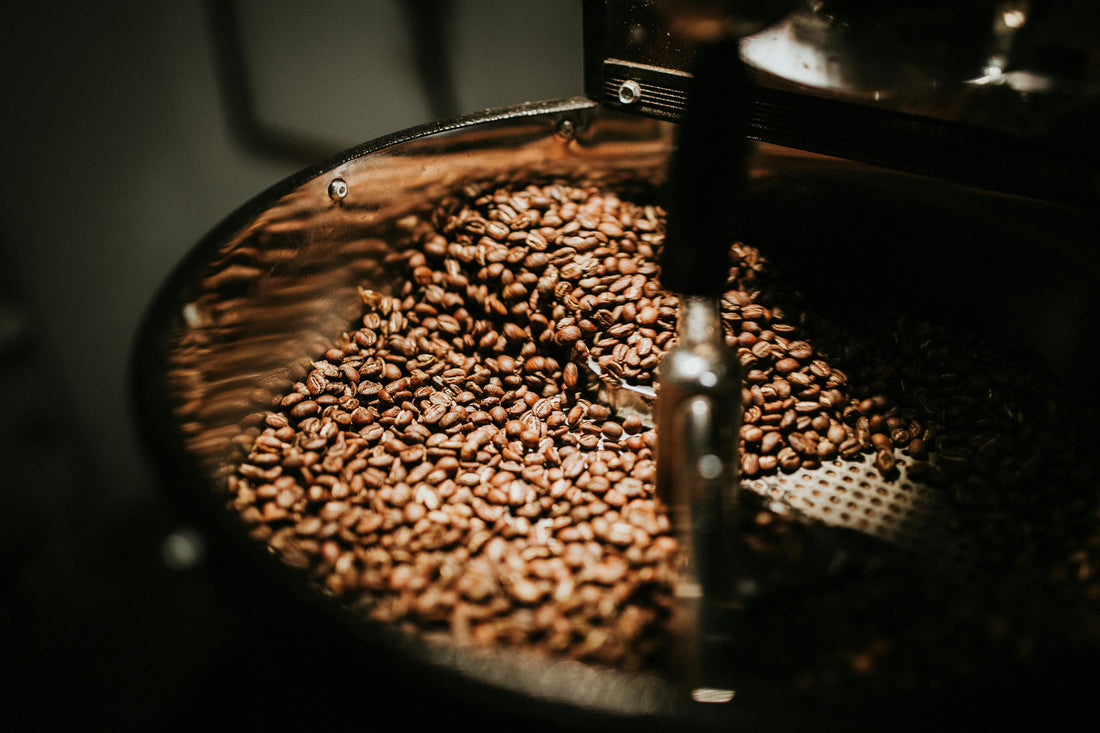Is decaf really caffeine-free? Not quite. While decaffeinated coffee isn’t completely free of caffeine, it typically contains only about 1–3% of the original caffeine, depending on the decaffeination method used. For many people who love coffee but need to reduce or avoid caffeine for health or lifestyle reasons, decaf offers a great alternative that still delivers the familiar coffee experience.
There are four major decaffeination processes commonly used today: the Swiss Water Process (SWP), the CO₂ Process (Carbon Dioxide or Sparkling Water Method), the Methylene Chloride Process (MC), and the Ethyl Acetate Process (EA). Each method has its own way of removing caffeine while preserving as much of the coffee’s flavor as possible.
Swiss Water Process (SWP): Pure and Chemical-Free
The Swiss Water Process is a natural, chemical-free decaffeination method favored by many specialty roasters. Originally developed in Switzerland in the 1930s and perfected in the 1980s in British Columbia, Canada, this process uses only water, temperature, and time—no chemicals or solvents.
Here’s how it works: green coffee beans are soaked in hot water to extract caffeine along with flavor compounds. The water then passes through a carbon filter that traps only the caffeine. This caffeine-free, flavor-rich water, called Green Coffee Extract (GCE), is used to soak new batches of beans, so only caffeine is removed while the flavors stay intact. The result is coffee that is about 99.9% caffeine-free and still tastes like the original coffee.
You’ll often find coffee labeled “Swiss Water Process,” “SWP,” or “chemical-free decaf.” It’s ideal for those sensitive to chemicals or who want a decaf that tastes great. Popular roasters offering SWP decaf include Stumptown, Verve, Counter Culture, Blue Bottle, and Onyx, among many local specialty shops. At Newbery Street Coffee Roasters, we find Swiss Water decaf has earthy notes reminiscent of tiramisu, with a subtle hint of tofu when served cold.
CO₂ Process: Modern and Flavor-Focused
The CO₂ Process, also called the Carbon Dioxide or Sparkling Water Method, was developed in Germany in the late 1970s and is mostly used by large-scale roasters aiming to preserve the coffee’s original flavor.
Green coffee beans are soaked in water to loosen caffeine, then placed in a sealed chamber filled with pressurized carbon dioxide. Under high pressure, CO₂ acts like both a gas and liquid, selectively bonding with caffeine molecules and drawing them out while leaving flavor compounds untouched. The caffeine-rich CO₂ is then separated, and the CO₂ is reused.
This process removes about 97–99% of caffeine and results in a clean, vibrant cup. While less common among small roasters, some premium espresso blends use CO₂ decaf for its flavor-preserving qualities. At Newbery Street, we’ve noticed CO₂-processed decaf tends to have lively acidity and richer flavor after roasting.

Methylene Chloride Process (MC): Common and Regulated
The Methylene Chloride Process is one of the most widely used decaffeination methods in commercial coffee production. It involves soaking green coffee beans and rinsing them with methylene chloride, a chemical solvent that bonds with caffeine molecules. The beans are then steamed to remove any remaining solvent.
Though it sounds intimidating, this process is strictly regulated by the FDA, ensuring methylene chloride residue in the final coffee is extremely low (under 10 parts per million) and safe for consumption. MC is efficient and cost-effective, preserving much of the coffee’s original taste, though some coffee lovers prefer solvent-free options.
Many supermarket decafs use this method, but specialty roasters tend to avoid it in favor of natural processes. At Newbery Street Coffee Roasters, we haven’t offered MC decaf yet, but we’re always open to exploring different methods.

Ethyl Acetate Process (EA): Naturally Decaffeinated
The Ethyl Acetate Process uses a naturally occurring compound found in fruits like bananas and in sugarcane, which is why it’s often marketed as a “natural” or “naturally decaffeinated” method. It’s especially common in Colombia, where sugarcane is abundant.
Green beans are steamed to open their pores, then soaked in ethyl acetate solution which bonds with caffeine and removes it. The beans are steamed again to remove any residual solvent. This results in coffee that is about 97–99% caffeine-free, often with a mild, slightly sweet flavor.
Many coffee lovers appreciate EA decaf for its balance of natural process, cost-effectiveness, and flavor retention. At Newbery Street Coffee Roasters, we’ve found coffees decaffeinated this way—such as those from El Vergel Estate in Tolima, Colombia—showcase delicate fruit flavors like strawberry, pomegranate, and tropical fruit.
Try Decaf at Newbery Street Coffee Roasters
Curious about decaf? Explore our carefully crafted selection of Ethyl Acetate (Sugarcane Process) decaf coffees. Our decafs are favorites among coffee lovers throughout Greater Boston and New York. You can find them on our website or visit us in person to taste the difference.
We were fortunate to deepen our understanding of decaffeination through James Hoffmann’s The Decaf Project, and we hope this information helps you learn more about decaf coffee.


